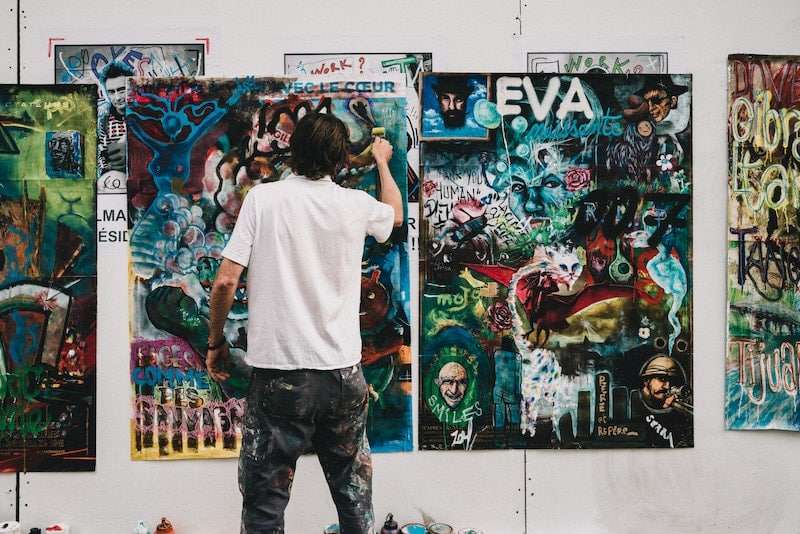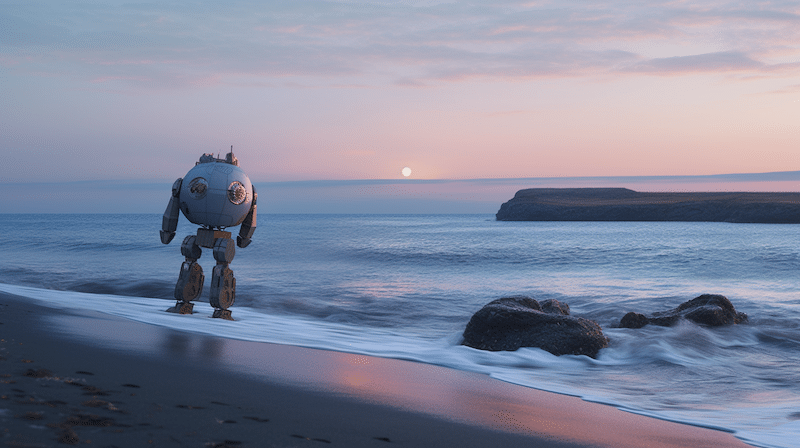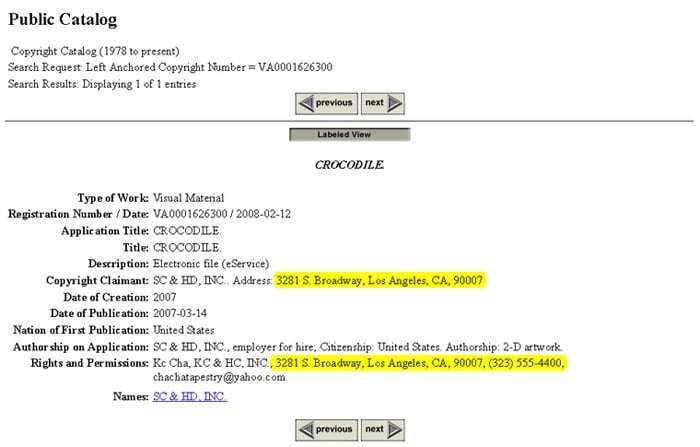In the wide-ranging universe of creativity, where ideas flow as fluidly as a river, it’s easy to cross boundaries inadvertently. As artists, we draw inspiration from the world around us, often remixing, reinterpreting, and integrating elements of existing works into our own. But navigating this intricate web of ideas can lead to an essential question: How do we discern if a work is free to use or protected by copyright?
To shed light on this complex issue, this guide explores the often-misunderstood landscape of public domain art, providing insights into identifying and using these copyright-free treasures effectively.
The Intricacies of Copyright Free Works and the Public Domain
Understanding copyright laws and their implications is pivotal for anyone dealing with creative work, whether that involves writing, art, photography, or music. These laws are the safeguards that ensure creators get their due—credit for their work and monetary benefit from it. However, like most laws, copyright rules are not as straightforward as they might initially appear. The nuances can often make it feel like you’re walking through a maze with no exit in sight.
Plus, copyright laws are not static; they’ve evolved and been refined over the years to balance the rights of creators with the cultural enrichment of society, making it even more difficult.
So to decide whether a work is copyright free or still under protection, we must first understand the current state of copyright law, its evolution, and its modern implementation.

The Current State of Copyright Regulations
In the U.S., for any work published after January 1, 1978, copyright protection begins at the moment of its creation and extends until 70 years after the author’s death. This law applies even if the creator does not actively register their work—it’s an automatic protection.
For works where the authorship isn’t tied to a specific individual (corporate-owned works, anonymous, and pseudonymous works), the copyright duration is 95 years from the first publication.
So, any work created after 1978 is likely to hold copyright protections unless the author has declared that the work is copyright free, such as using a Creative Commons license, or if the work was created using AI image generators, like Dall-e or Midjourney, which we will discuss later.
Decoding Pre-1978 Copyright Regulations
The legal landscape was very different for works published before January 1, 1978. During this period, securing copyright protection required two critical steps: registration with the Copyright Office and a visible copyright notice “©” on the works. If either of these criteria were missing, the work was copyright free.
Unfortunately, those two seemingly simple indicators have many caveats due to the changes in the laws at various points during the time period, such as changes in the duration that a work could be copyrighted or the ability to renew copyright under certain conditions. Each alteration moved the line between what was protected and what wasn’t, making it difficult to determine what works are copyright free today.
Thankfully, you can use a few tricks and tips to identify whether a work is in the public domain.
Publication Date. The easiest starting point is the date of publication. Any work published before 1924 is now in the public domain and can be freely used in your work.

Copyright Notices. Before 1978, a copyright notice was required to secure copyright protection. (i.e. © Artrepreneur 2023). As a result, any work published between 1923 and 1977 without a copyright notice has now fallen into the public domain. This may sound straightforward, but it carries with it one element of caution: in the digital age, it’s easy for someone to crop out a copyright notice from an image, thereby creating a false impression that the work is in the public domain. So don’t just assume that since it is a work created before 1978 and is without a copyright notice, it is automatically copyright free.
Copyright Renewal. Before 1978, copyright had a much shorter timespan than today. However, in many cases, a copyright holder could renew their copyright for an additional period. The duration for the renewals also changed over time, so how long a specific work had copyright protection could vary based on when and if it was renewed. As a rule of thumb:
- Any work created between 1923 and 1963 that had a copyright notice but whose copyright wasn’t renewed is in the public domain, and
- Any work created between 1923 and 1963 with a notice and was renewed or from 1963 until 1977, is copyrighted for 95 years from the first date of publication.
These guidelines, while helpful, are not foolproof, so every work should be evaluated individually.
The Digital Revolution’s Role in Find Copyright Fre Images
The advent of digital technology has revolutionized the way we engage with and access art. Countless artworks spanning various eras, cultures, and genres are now at our fingertips. However, as with all seismic shifts, the digital revolution carries its own set of challenges, and it has complicated the issue of copyright in many ways.
For instance, the cropping out of copyright notices from digital images, as mentioned earlier, makes it difficult to ascertain whether a work is in the public domain or not. Thus, meticulous research is critical before you use an image, particularly if it is sourced from the internet. This will ensure that you adhere to the laws and respect the rights of creators.
The Surprising Case of Movie Stills and Publicity Photos
In an unexpected twist, many movie stills and publicity photos from the 1950s and 60s are copyright free. Here’s why: when a movie is registered for copyright, this protection does not automatically extend to still shots from the movie. The studio had to register these stills for them to enjoy copyright protection, a step often overlooked.
The rise of digital movies, where it’s easy to capture a still image, has amplified this anomaly. Furthermore, publicity photos, like star headshots, were typically not registered because they were meant for public dissemination, rendering them public domain material.
So many images from old movies are likely to be copyright free even if the movies are not. On the other hand, movie posters do not fall into the same category as they were usually copyrighted. So if you see a cool campy movie poster from the 1950s, it probably isn’t copyright free.
Exploring Generative AI Images: The New Frontier of Copyright Free Art
When it comes to copyright-free imagery, the advent of Artificial Intelligence has opened an entirely new frontier. Generative AI, a subfield of AI, utilizes algorithms to create content autonomously, be it a piece of music, a passage of text, or in our case, an image. It’s an exciting development that carries implications for artists and creators, offering a wealth of inspiration and resources that are entirely free from the constraints of copyright. But why is that? Let’s delve into it.
First, it’s important to understand the principle of generative AI images. Algorithms trained on vast datasets of images create these visual pieces. The AI learns patterns, styles, and structures from these datasets, then generates new images based on what it has learned. In essence, these are original creations of the machine, devoid of human intervention in the generative process.
Now, let’s consider copyright law as it stands today. Traditionally, copyright law is designed to protect the rights of human creators, securing their work’s exclusive use and allowing them the opportunity to profit from their creation. When a human artist creates a piece of work, that artist is automatically recognized as the copyright owner. The law provides these protections based on the principle that creativity is a human endeavor.
Herein lies the challenge when we try to apply the same principles to works created by AI. The US Copyright Office, for instance, has explicitly stated that works generated by a machine with no human author do not qualify for copyright protection. The concept of authorship is crucial in copyright law, and AI, being non-human, cannot legally be considered an author. (for more details, see “Who Really Owns All the Mind-Blowing AI Computer Art Flooding the Internet?“)
For artists and creators, this can be a boon. Works created by AI fall into the public domain immediately upon creation, meaning they can be used, shared, and adapted without fear of copyright infringement. They are a rich source of inspiration and resources for your artwork. They can be utilized in their original form or modified to suit the artistic vision.
However, this doesn’t mean one should disregard potential ethical considerations. For instance, while the AI-generated image itself may not hold copyright, the training data used by the AI could be derived from copyrighted material. Therefore, while the end result is not copyrighted, there’s a gray area concerning the original data input into the AI. It’s a rapidly evolving field, and laws are still catching up with the technology.

Despite these caveats, there’s no denying that generative AI images are a fascinating area for artists to explore, presenting an entirely new form of copyright-free material. As AI continues to advance and evolve, it will be interesting to see how it shapes the landscape of copyright-free and public domain art in the future.
Using Online Tools for Image Research
Is there a definitive way to know what is registered and what isn’t? While no surefire method exists, a few strategic approaches can aid your investigation.
Reverse Image Search. You could use an image search tool, like Google or Bing images, to scout for other versions across the web. If only a few versions are listed in the search results, it may mean they haven’t been duplicated much due to copyright protections.
On the other hand, if any of the search results show images attached to news articles on major publications, like The New York Times, the image will likely be credited as part of the sites’ policies toward accreditation and transparency. You can see if a caption is crediting the photographer, artist, or representative, which can help you determine if a work is copyright free.
Sometimes the context of the image can help, also. For example, a photo of a movie theater where the movie playing in the background is Star Wars would suggest a publication date before 1977, giving it a pretty solid chance that it’s in the public domain.
The Copyright Office database. As mentioned earlier, in the U.S., all works published after January 1, 1978, are automatically copyrighted, regardless of whether they’re registered with the Copyright Office, but earlier works required registration or re-registration with the Copyright Office to have copyright protection.
The Copyright Office database, therefore, can be a treasure trove of information. You can search using parameters like title, author, or date. You can also describe the work you’re investigating, and the database will fetch related results.
However, one big problem when searching through the Copyright Office is that their database doesn’t actually have images attached to the records, only descriptions of the images. There is also no method for uploading an image to do a reverse image search like you would with Google or Bing. To find an image, you can only describe it using keywords or other terms. Unfortunately, with the vast amount of images in the database, you often end up with dozens or even hundreds of records listed in the results, and many of those results may be very similar in their descriptions.
So without other identifying information, like who created the image, where it was originally published (such as a magazine or book), or some other identifiable feature within the image, you are probably out of luck.

Look at the Metadata. And let’s not forget about metadata — a powerful tool in your copyright investigation arsenal. MNetadata is essentially data about other data. In the context of a digital image, it is a text file attached to the image but hidden from view. Metadata can hold lots of information, both automated and manually entered.
For example, a photographer may include their name, address, and copyright information about the photo by adding it manually when doing edits on the photo with programs such as Photoshop or Lightroom. The camera also adds metadata automatically, including the brand and model of the camera, the lens being used, shutter speed, ISO, and sometimes it will even provide the geolocation of where the pho9to was taken.
While not foolproof, examining the metadata of a digital file can often reveal information about the copyright holder and the date of creation. A word of caution, though: sometimes, metadata can be altered or stripped entirely, so it should be used in conjunction with other methods for a comprehensive investigation.
If you want to read an image’s metadata, you can use an online tool like Exif Viewer.
__________
If you find an image you want to use as a resource or reference for your creative projects, you should be sure that the work is copyright free first. While navigating the landscape of copyright laws and the public domain can be challenging, it is still better to do the research rather than find a copyright infringement notice in your inbox. Generally, it isn’t hard to find out if an image holds copyright protection as the copyright holders want you to know the work is protected.
With careful research and a solid understanding of the rules, you can unearth a wealth of artistic treasures while ensuring that you respect the rights of creators. After all, the realm of creativity is a shared space that thrives on both the protection of original works and the freedom to explore, remix, and reimagine.
Do you have any tricks or advice for finding copyright free images? Let us know in the comments below
